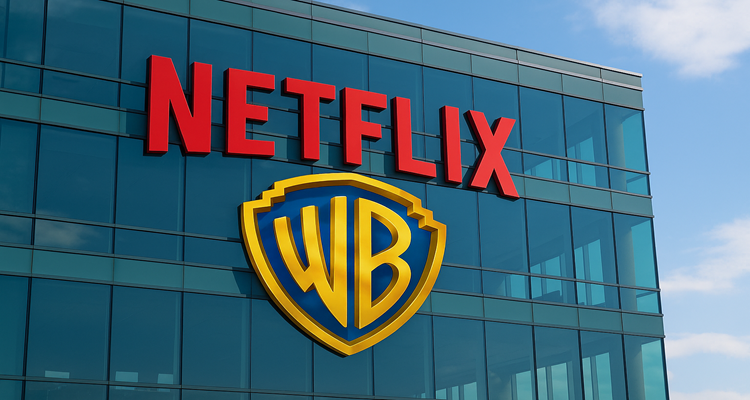OpenAI’s GPT-5 Set for August Launch with Multimodal Capabilities
OpenAI is poised to release its most advanced model, GPT-5, in August. This update blends multiple AI systems to handle diverse tasks, signaling a leap forward in generative intelligence.
Introduction: A New Chapter in AI Begins
OpenAI is gearing up for a major upgrade to its artificial intelligence arsenal. According to a recent report by The Verge, the company plans to unveil GPT-5—its next-generation language model—as early as August. If launched on schedule, this release could mark a significant evolution in how AI systems function and integrate.
Context & Background: The Road to GPT-5
Over the past few years, OpenAI has solidified its role at the forefront of generative AI with its GPT series. Backed by tech giant Microsoft, the company has rapidly iterated on its models—introducing new capabilities with each version. The GPT-4 and 4o (omnimodel) iterations brought a leap in reasoning and multimodal support. Now, GPT-5 promises to be a culmination of OpenAI’s push to create smarter, more adaptable AI tools.
What sets GPT-5 apart is its ambition. It won’t just be another standalone large language model (LLM). Instead, it is being developed as a comprehensive AI platform capable of combining multiple sub-models, each optimized for specific tasks—signaling a more modular and versatile approach to artificial intelligence.
Main Developments: What GPT-5 Will Offer
Sources familiar with OpenAI’s plans shared with The Verge that GPT-5 is being positioned not as a single model, but as a collection of models working in tandem. This architecture allows it to perform a broader array of functions—from conversational reasoning and image interpretation to code generation and real-time analysis.
OpenAI CEO Sam Altman hinted at this direction earlier in 2024, noting the company’s intent to unify its GPT-series with the o-series models (like GPT-4o). GPT-5 is expected to house these capabilities under one roof, delivering a seamless experience across use cases.
The core technology will likely include the o3 model—OpenAI’s codename for an advanced system currently in development—alongside other proprietary innovations designed to make AI more intuitive and resourceful.
However, it’s worth noting that OpenAI’s timelines are fluid. The report acknowledged that internal release dates have historically shifted due to technical challenges, infrastructure constraints, or competitive pressure from rival AI developers.
️ Expert Insight: What the Industry is Saying
While OpenAI has not publicly confirmed the launch date, industry insiders suggest that the model’s release is imminent. One unnamed source told The Verge that although early August is the current target, changes to the schedule remain a strong possibility.
Analysts believe this strategy of combining multiple models into one system could reshape how users interact with AI. Instead of switching tools for text, code, or visual tasks, GPT-5 may offer a unified interface that automatically leverages the right model for the right job.
Tech observers also speculate that this modular approach may be OpenAI’s answer to the growing competition from Anthropic’s Claude, Google’s Gemini, and Meta’s Llama series.
Impact & Implications: What GPT-5 Means for the Future
If GPT-5 delivers on its promise, it could redefine AI-powered applications across industries. From personalized education and enterprise automation to advanced search and healthcare diagnostics, the potential use cases are vast.
The integration of distinct AI engines within a single system may also reduce user complexity, making it easier for developers and businesses to build around OpenAI’s infrastructure.
Furthermore, this evolution aligns with OpenAI’s broader mission: to build general-purpose AI that’s safe, accessible, and useful across domains. A system that can adapt to diverse tasks autonomously is a foundational step toward Artificial General Intelligence (AGI)—a long-term vision shared by both OpenAI and its backers at Microsoft.
Conclusion: A Milestone in the Making
While GPT-5’s official unveiling may still be a few weeks away, its implications are already rippling through the tech world. Whether it arrives in August or slightly later, the model is poised to mark a significant advancement in AI’s capabilities and accessibility.
For developers, enterprises, and everyday users, GPT-5 could become the most powerful and flexible tool OpenAI has ever released. As anticipation builds, all eyes are now on how the company will navigate the final stages of rollout—and how it plans to handle the inevitable disruption such a model will bring.
⚠️ (Disclaimer: This article is based on reports from The Verge and statements attributed to sources familiar with OpenAI’s plans. As with all product development news, details are subject to change and have not been officially confirmed by OpenAI at the time of writing.)
Also Read: Replit AI Agent Wipes Data, Sparks Outrage and Apology











